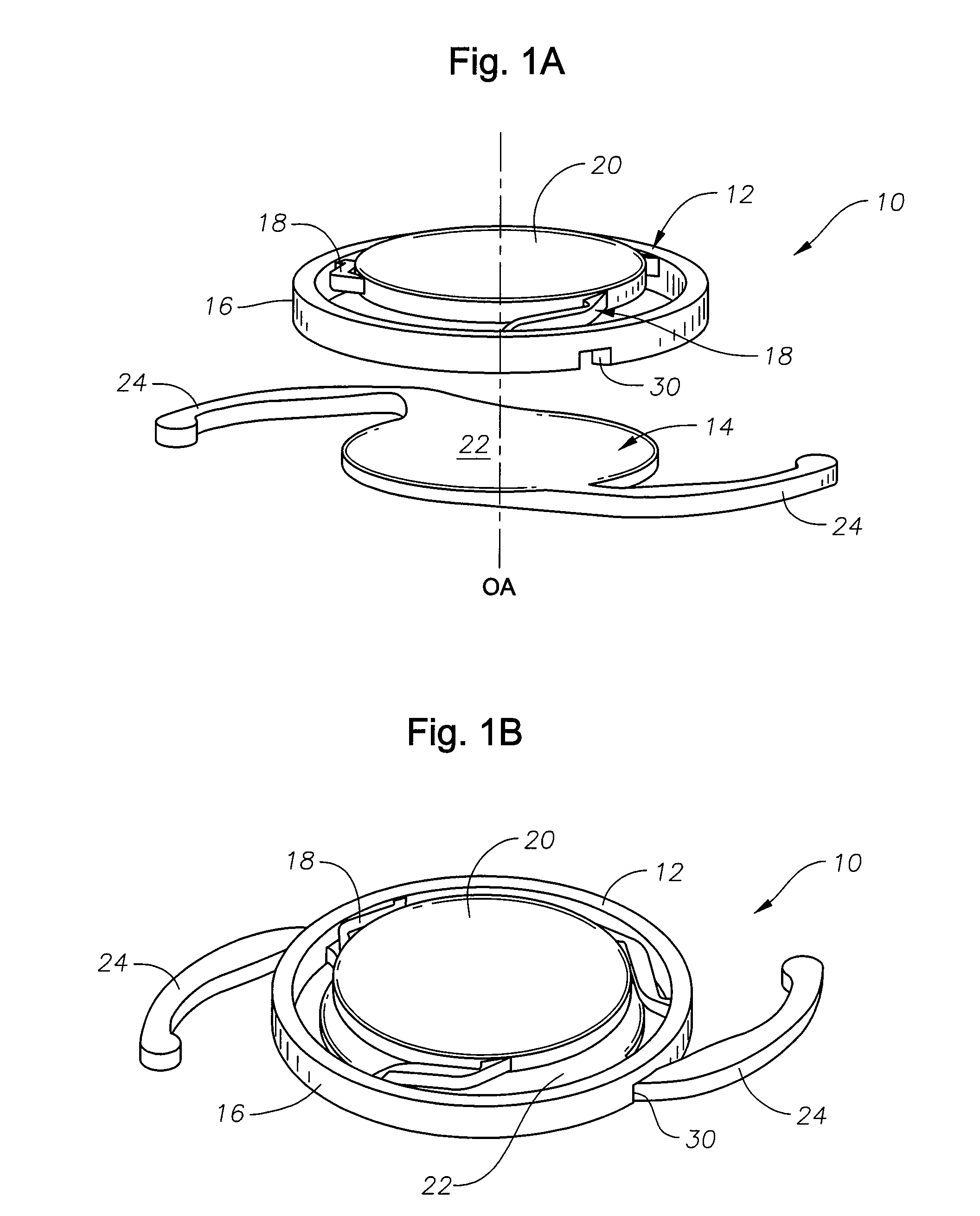Accommodative intraocular lens system
a technology of intraocular lens and ocular lens, which is applied in the field of ocular lens, can solve the problems of deteriorating vision, increasing the risk of eye damage, and increasing the risk of eye damage, and achieves the effects of reducing the risk of eye damag
- Summary
- Abstract
- Description
- Claims
- Application Information
AI Technical Summary
Benefits of technology
Problems solved by technology
Method used
Image
Examples
Embodiment Construction
[0027]As best seen in the FIGUREs, lens system 10 of the present invention generally consists of anterior lens 12 and posterior lens 14. Anterior lens 12 comprises first optic 20, ring 16 and spring-like attachment structures 18. First optic 20 is preferably integrally formed (e.g., as a single-piece) with ring 16 and is connected to ring 16 by one or more spring-like structures 18. Lenses 12 and 14 are preferably made from a soft, foldable material that is resistive to the formation of PCO, such as a soft acrylic, a hydrogel or silicone. First optic 20 can be a monofocal or multifocal optical element having any suitable negative or positive power. Posterior lens 14 comprises a second optic 22. Second optic 22 is located posteriorly to first optic 20 and may also be a monofocal or multifocal optical element and can have any suitable power, but preferably has an opposite or supplementary power to that of first optic 20. Posterior lens 14 comprises a plurality of haptics 24, which can...
PUM
 Login to View More
Login to View More Abstract
Description
Claims
Application Information
 Login to View More
Login to View More - R&D
- Intellectual Property
- Life Sciences
- Materials
- Tech Scout
- Unparalleled Data Quality
- Higher Quality Content
- 60% Fewer Hallucinations
Browse by: Latest US Patents, China's latest patents, Technical Efficacy Thesaurus, Application Domain, Technology Topic, Popular Technical Reports.
© 2025 PatSnap. All rights reserved.Legal|Privacy policy|Modern Slavery Act Transparency Statement|Sitemap|About US| Contact US: help@patsnap.com



